Health Care > QUESTIONS & ANSWERS > California Ambulance Driver's License Exam with complete solution (All)
California Ambulance Driver's License Exam with complete solution
Document Content and Description Below
California Ambulance Driver's License Exam with complete solution The following are essential for safe ambulance operation: ✔Ans✔ - Compliance with applicable requirements - Exercise of sound... judgment - Defensive driving techniques Emergency ambulance service regulations are adopted by California Highway Patrol (CHP) apply to: ✔Ans✔ All publicly and privately owned ambulances used for emergency service. CHP regulations do not apply to: ✔Ans✔ - Ambulances not used to respond to emergency calls (IFT) - Ambulances that are federally owned and operated (federal directives) In order for privately/publicly owned emergency ambulances to be equipped and operated as emergency vehicles: ✔Ans✔ They must be licensed to do so by the CHP. "Code 3" is justified only when: ✔Ans✔ - When initially responding to an emergency call - When speed in obtaining emergency medical care appears essential to save a life, prevent undue suffering, or to reduce or prevent disability Ambulances are inspected: ✔Ans✔ - By CHP annually & randomly Decisive factors permitting alternate destinations include: ✔Ans✔ - Consideration of the needs/desires of the patient - Professional medical direction - Protocols established by the local Emergency Medical Services (EMS) agency Temporary certificate becomes void after: ✔Ans✔ - 180 days Regular certificate is good for ✔Ans✔ - Five years Ambulance driver certificate only valid when: ✔Ans✔ - Accompanied by a valid driver's license and medical examination certificate (2 yrs) - After 1 year, accompanied by EMT cert Renewal apps will be accepted ✔Ans✔ - During the six months prior to expiration of previous certificate Responsibility for the operation of the service in compliance with regulations rests with: ✔Ans✔ - The ambulance service owner, operator, manager, or supervisor The ambulance driver must demonstrate his/her driving competence to: ✔Ans✔ - The ambulance service owner (his/her employer) Responsibility to ensure that the driver is trained and competent in the use of safety and emergency care equipment rests with: ✔Ans✔ - The ambulance service owner (his/her employer) The beginning driver must possess at minimum: ✔Ans✔ - Advanced first aid cert - Valid CPR cert - EMT cert w/in one year An ambulance driver's primary responsibility is: ✔Ans✔ - The safe transport of the patient Code 3 transport can be unnecessary and harmful because it can: ✔Ans✔ - Frighten the patient - Put a stabilized patient into shock - Disrupt ongoing medical treatment - Aggravate certain conditions Conditions that require especially smooth, normal speed transport include: ✔Ans✔ - Spinal injuries - Serious fractures - Heart attacks Code 3 operation is advised for the following which constitute only 5-7% of total trips: ✔Ans✔ -Uncontrolled hemorrhage - Uncontrolled cardiovascular or respiratory impairment (e.g. CHF, heart wounds, pulmonary edema) - Complicated impending childbirth (requiring operation) The steady burning red warning lamp must be visible from: ✔Ans✔ - 1000 ft Hazards that must be anticipated by an ambulance driver during "Code 3" operation include: ✔Ans✔ - "Blind" intersections and driveways - Motorists with impaired hearing - Inattentive drivers Ambulance drivers should: ✔Ans✔ - Presume that other drivers do not hear the siren at a safe distance under most conditions - Be aware that other drivers often have difficulty in locating the source of siren sounds - Restrict the use of sirens to situations where they are most effective; e.g. warning peds and drivers traveling at reduced speeds w/low bg noise - Avoid passing on the right Front steady burning red warning light shall be displayed when: ✔Ans✔ - Traveling code 3 - An extreme hazard exists Flashing red warning lights may be displayed: ✔Ans✔ - Only during extremely hazardous conditions, e.g. situation that requires traffic to stop/roadway to be blocked Flashing amber warning lights may be displayed: ✔Ans✔ - Only when unusual traffic hazard exists Warning lamp effectiveness may be reduced by: ✔Ans✔ - Low sun or glare - Confusion with traffic signals/neon lights - Position of lights on the ambulance Use of headlamps during daylight hours: ✔Ans✔ - Is effective in reducing accidents by making the vehicle more visible to other drivers 5 elements of defensive driving: ✔Ans✔ - Knowledge: Rules of the road; own limitations - Alertness - Vision - Judgment - Skill Loss of control of the vehicle can result from: ✔Ans✔ - Driving too fast for conditions - Accelerating too hard - Braking inappropriately - Changing direction too abruptly - Taking a curve at too high a speed [Show More]
Last updated: 2 years ago
Preview 1 out of 6 pages
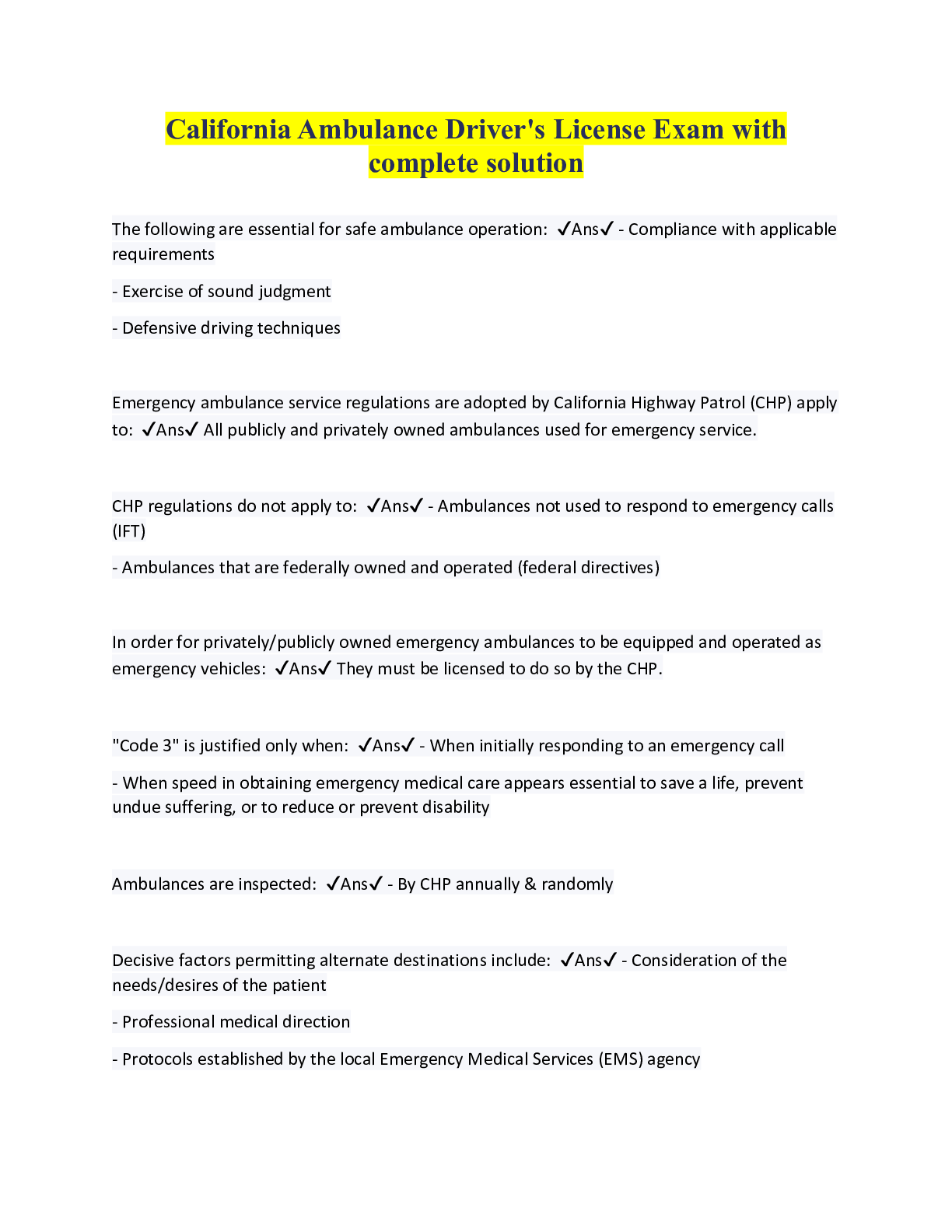
Buy this document to get the full access instantly
Instant Download Access after purchase
Buy NowInstant download
We Accept:

Reviews( 0 )
$8.00
Can't find what you want? Try our AI powered Search
Document information
Connected school, study & course
About the document
Uploaded On
Mar 08, 2023
Number of pages
6
Written in
Additional information
This document has been written for:
Uploaded
Mar 08, 2023
Downloads
0
Views
137
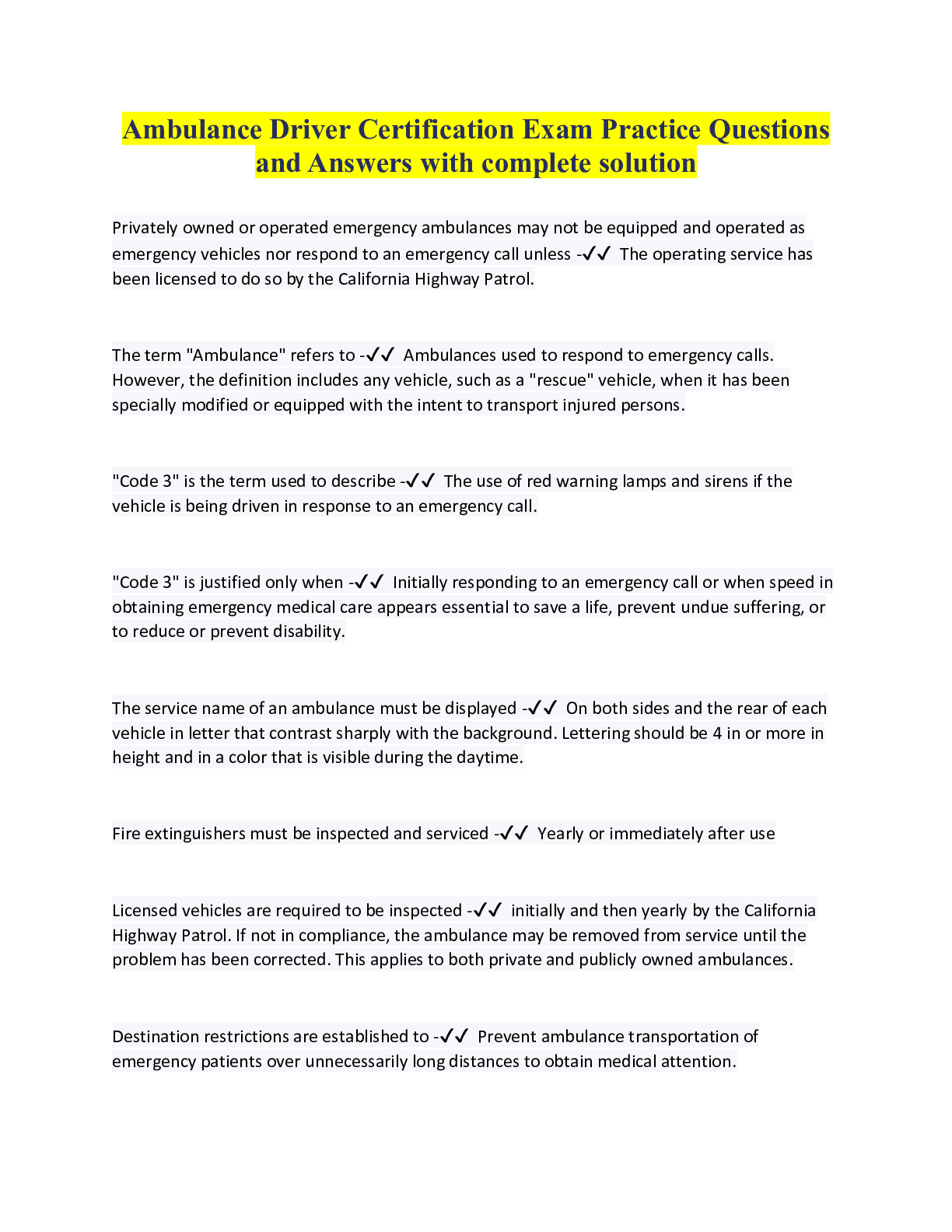


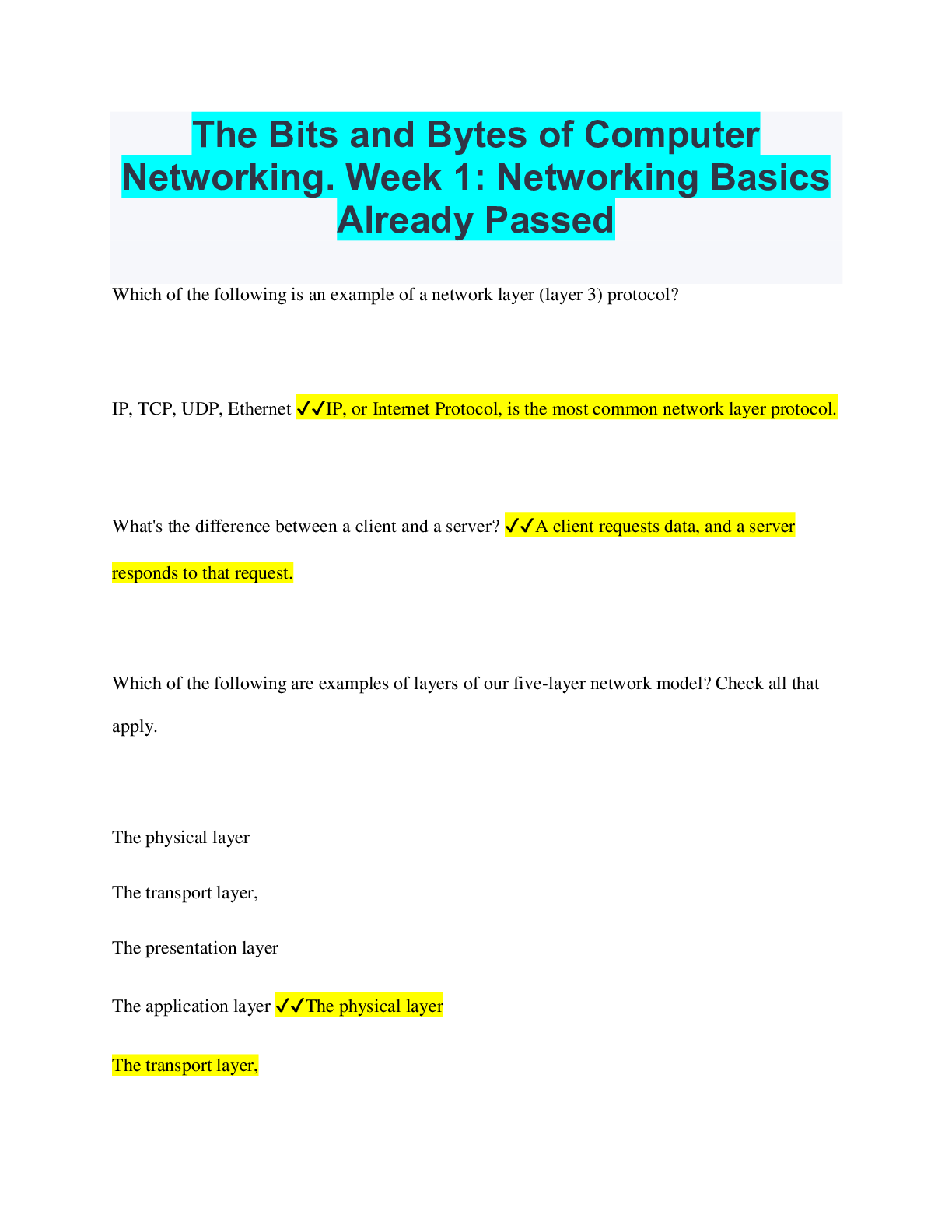
 Answered 2023.png)


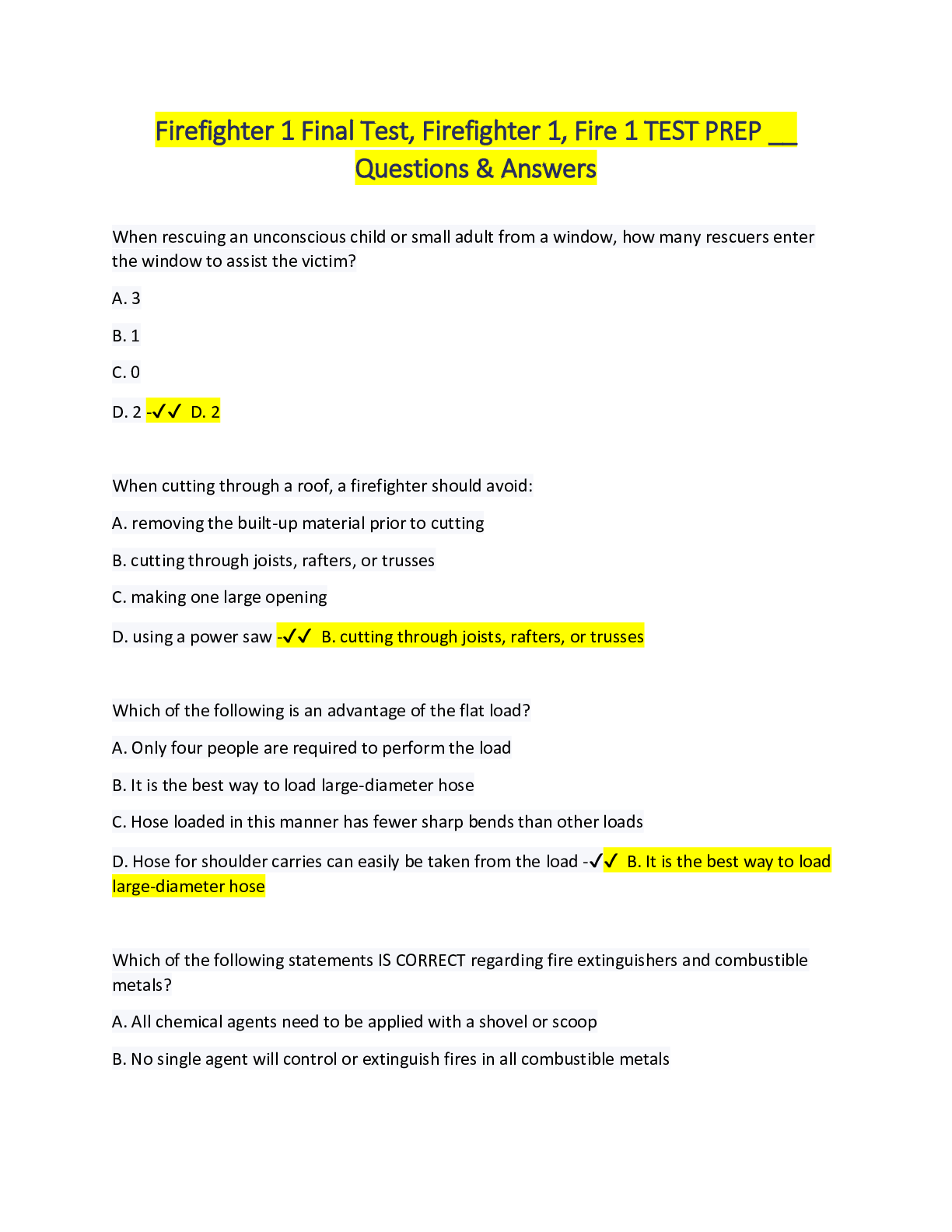
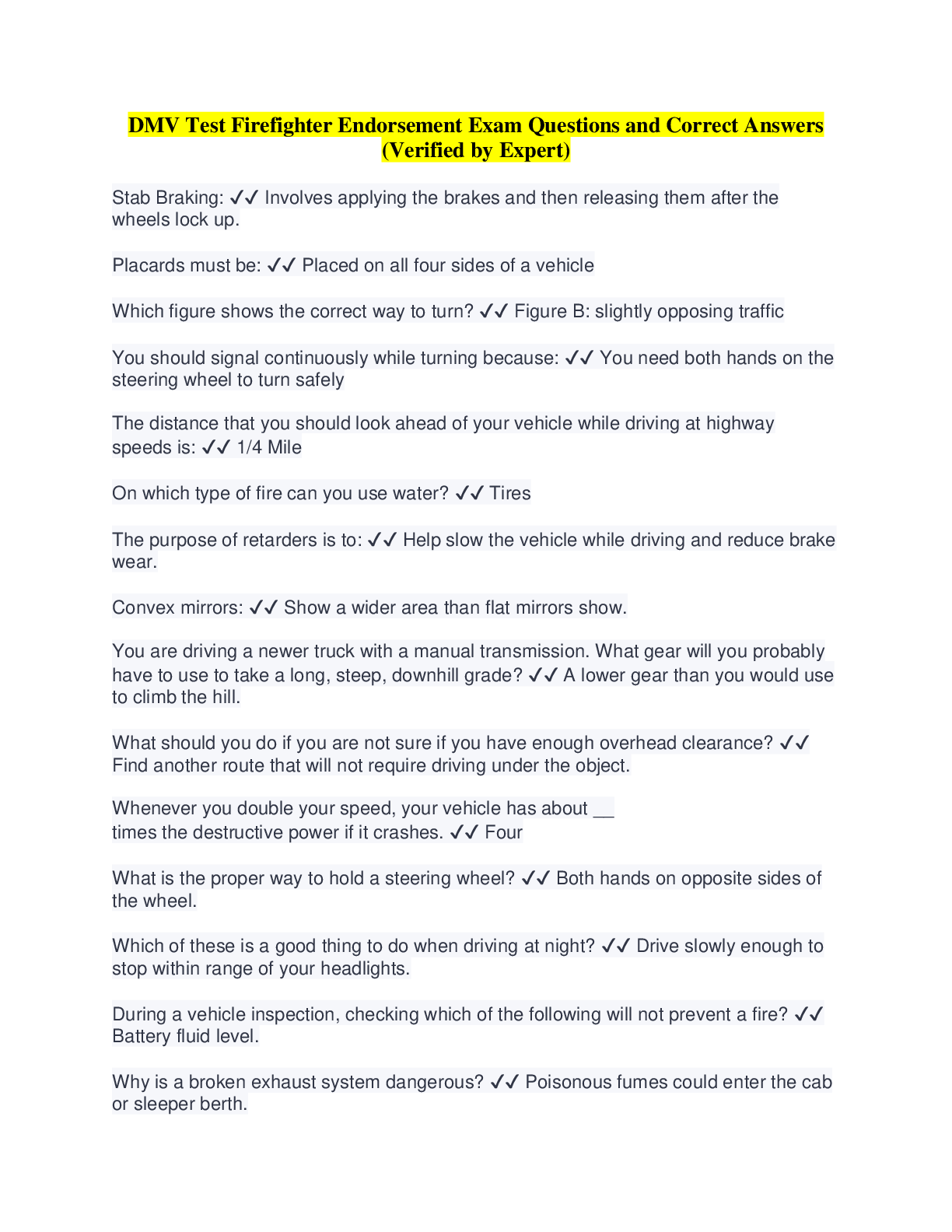


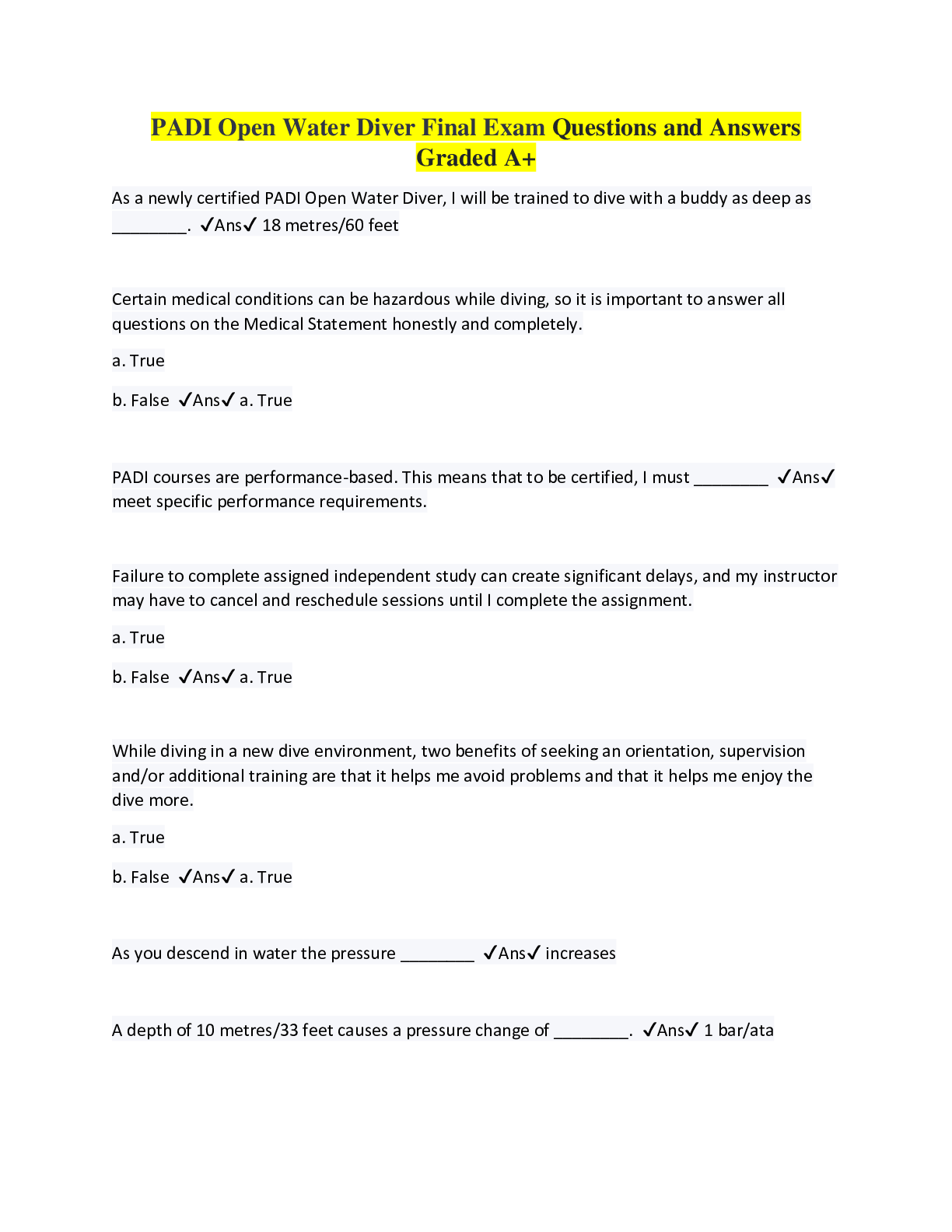




.png)





.png)




